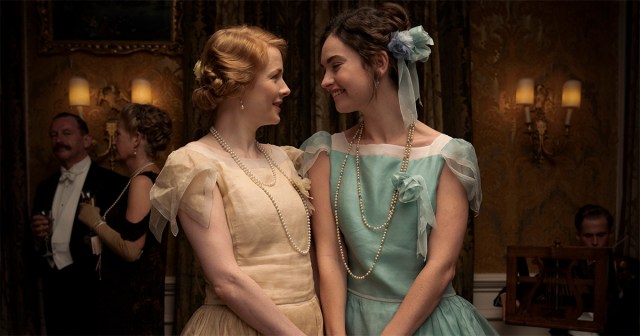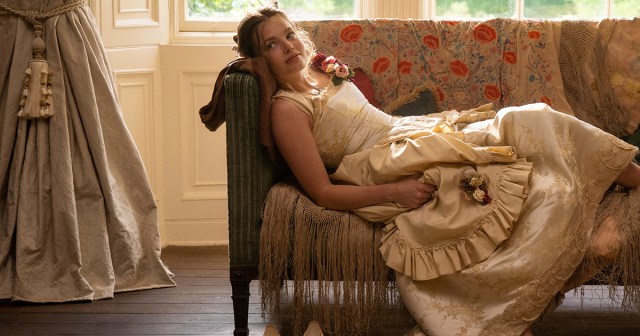
TL;DR
- Apple TV+ delivers a modern spin to new period drama about a culture clash between heritage England and Manhattan energy.
- Cinematographer Oliver Curtis translates this into no-cut “oners,” swirling camera moves, a contrasted lighting pattern and the use of large format sensor combined with portrait lenses.
- “It’s all about forward movement in people’s lives. It’s a playful show, full of light and color. The cinematography had to reflect that.”
With director Susanna White’s “The Buccaneers,” an adaptation of Edith Wharton’s unfinished final novel set in the 1870s, Apple TV+ adds a period drama with a modern spin to its lineup.
The story turns on the fallout of intercontinental marriages of convenience between five wealthy American heiresses and Englishmen long on family trees but short on cash. The women travel from New York to England, where they vie to pair off with aristocratic, eligible young men.
For cinematographer Oliver Curtis (“Stay Close,” “Vanity Fair,” for which he was nominated for a BAFTA), who worked on the first two episodes, the contrast was a natural setup.
“The theme of the clash of cultures from these vivacious, energized, young American women coming over to musty old England to meet their potential suitors has got a natural kind of transformative quality. You’ve got the color, light, and energy of their New York life, and then the dour, desaturated world of old England,” he told Motion Pictures. “It’s all about forward movement in people’s lives. It’s a playful show, full of light and color. The cinematography had to reflect that.”
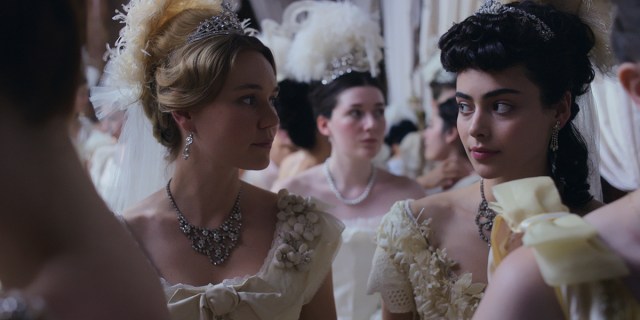
Opening With a Oner
From the opening moments of the show, the expansiveness of this world and its characters are established via a long, meandering one-shot throughout an opulent New York home.
“Susanna and I designed … an opening statement of energy, of movement, of exuberance,” Curtis told No Film School. “So it was a real marker, if you will, for what you are getting yourself into with this show. And also the fact that it’s driven by the movement of our lead character played by Kristine Frøseth.”
Not only did the take need to incorporate different spaces with the cooperation of dozens of actors and supporting artists, but Curtis also had to consider what tools to use with his Steadicam operator, Alex Brambilla.
“Because we start close and wide on the flowers and as we sweep in, you get more compression as it gets busier with people inside. So we probably went onto a slightly longer focal length there. And then when we got up to the landing after Kristine meets Christina [Hendricks] there, I think we widened out a little bit more so that when we do the hidden edit transition, we were on a slightly wider focal length, which would allow us to get separation there.”

They avoided any reflective surfaces with the coordination of the camera ops and cast. Eagle-eyed viewers might catch the one hidden cut in the sequence.
“There has to be a hidden cut because the first half of it is on location and the second half is on a build,” Curtis said. “So where we go into the rooms, we built that because we couldn’t find a building that gave us those two spaces. Plus we needed green screen beyond the windows for the street, which was just outside Glasgow City Chambers doubling for Madison Avenue.”
Camera Techniques Express Characters
The story theme of a clash of cultures gave the DP a clue that there was going to be an evolution of the show’s look. “You’re going to start with the modern American Vision and move to the old world vision. So that was an exciting prospect and thinking about how we were going to evolve that,” he explained to Patrick O’Sullivan.
The other aspect of the show he had to consider was to marry the grand interiors and big ballroom and dinner scenes with close ups of intimacy and expression. This drew him to using a larger format sensor of the Alexa LF combined with portraiture lens of the Arri DNA glass.
“It’s got all of the tropes of a period drama that you’d expect, but it’s also surprising and different in a lot of ways,” Curtis added.
Dynamic camera techniques, including tracking and Steadicam shots, reflect the characters’ infectious spirit.
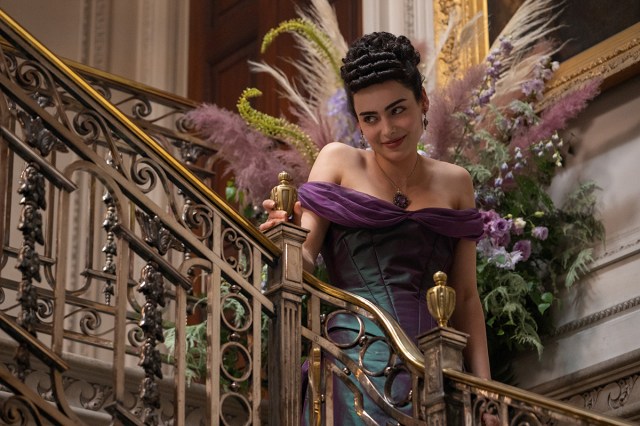
“When you’ve got an ensemble cast and the blocking is fairly fluid and not too static, the camera has to adjust and configure itself around their movements,” Curtis told IBC365. “Also shooting ‘B’ camera most of the time gave the editor coverage to build pace and find the action within the scene.
Lighting, Then and Now
“Something I hadn’t really taken on board previously is that the clothing from that period was much more reflective than most modern fabric. The bustles and corsets are textured and reflect the light so you get a lot of animation in the costume and movement.”
In the 1870s, electricity was available in the homes of wealthy New York society, while British aristocracy still had gas, oil lamps and candles. Curtis leapt on this as a storytelling device.
“The New York interiors are flooded with light, they are bright and open and accessible but when our heroes arrive in London the light hardly penetrates indoors. We keep the lighting levels low key there to build that contrast. Gradually as the women infiltrate high society the light starts to flood in.”
READ MORE: Behind the Scenes: The Buccaneers (IBC365)
Glasgow City Chambers was used for interiors of London’s Grosvenor House, scene of a grand debutante’s ball. The building featured a magnificent white staircase, which White thought ideal to stage a parade of white gowned debutantes.
It was a very challenging space to work in. A giant sky light overhead meant the DP had to compete with all the vagaries of the Glasgow weather, and the staircase itself descended around an atrium, making it tricky to position and move a camera.
“We managed to work our way down the building in stages,” he told IBC. “Where there were doorways leading onto council offices I asked [production designer Amy Maguire] to build window plugs (where designers create a window) so we could bring daylight into the belly of the building where otherwise it would be gloomy and dark. This created interesting pools of light and contrast where we could stage different beats of the story. It was an unusual piece of staging for something that could otherwise have been a conventional ballroom scene.”
He used helium balloons to help light spaces in period houses partly to protect the delicate cornicing from rigging. They came in useful during the debutante’s ball scene, too, where the balloons were towed down the staircase as the camera team worked their way into the bowels of the building.
The British cinematographer expounded on his process with O’Sullivan, recalling that at one point in his career he was mostly shooting commercials.
“And as marvellous as that was in itself, traveling, seeing the world earning good money and making some interesting work it, you know, it can get very stultifying,” he said. “You kind of find yourself yearning to be able to hold a shot longer than two seconds and work with actors, I think it is great to have a good mixture [of work] so that you stay fresh and challenged.
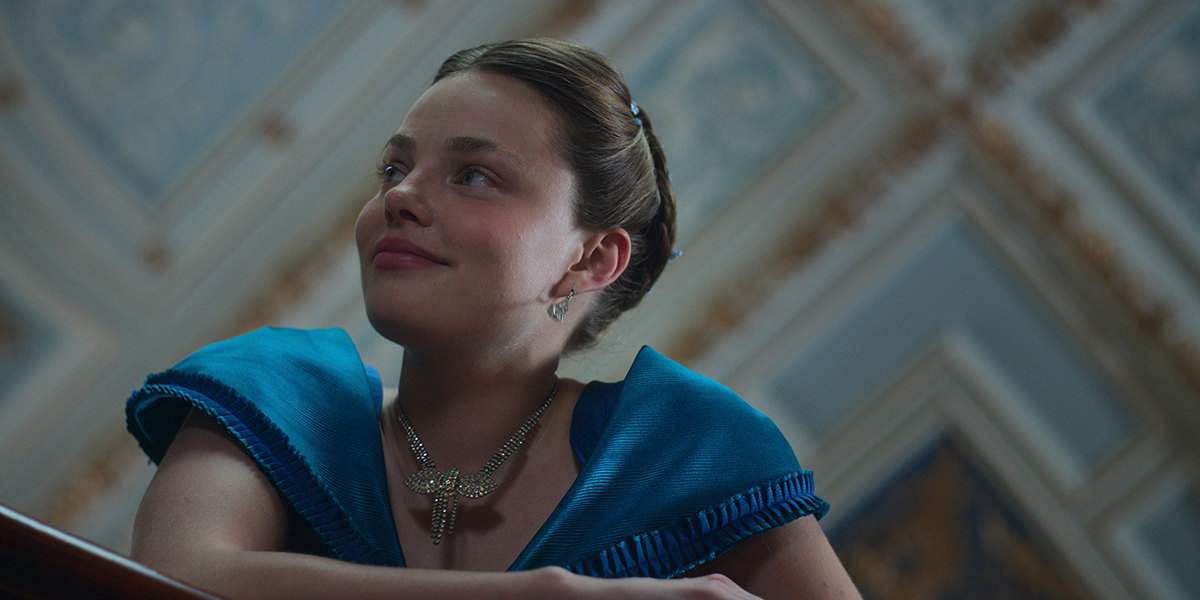
He started out his career shooting on film and says his goal remains to shoot in camera as much as possible. “You also have to be cognizant of the post processes and the ability you have in the grade to work with the colorist. Colorists are artists, too, and they can bring an awful lot to a show and surprise you with some of the solutions and make transitions which you thought wouldn’t work.
“It’s really important to have that in your back pocket. And I suppose my dialogue with the DIT and the VFX onset is one of reassurance that I just, I can say, ‘you know, look, I haven’t got the time, or the resources perhaps to deal with a certain problem, but do you think that will be okay, in terms of exposure, in terms of separation?’ These are experts around you doing their job for a reason, and you’d be foolish not to take on board their input.”
The foundation of his craft remains lighting and shooting it the way that you want it to be done, “if you walked away from it that day and never saw the image again, which is often the case on commercials. Because you can’t follow commercials through post production as much as you can drama. You have to trust that the image is there. So yeah, I try to walk away from set feeling that yes, I have got the essence of that, and it looked the way I wanted to look, and I’m not going to have to do too much in post.”


